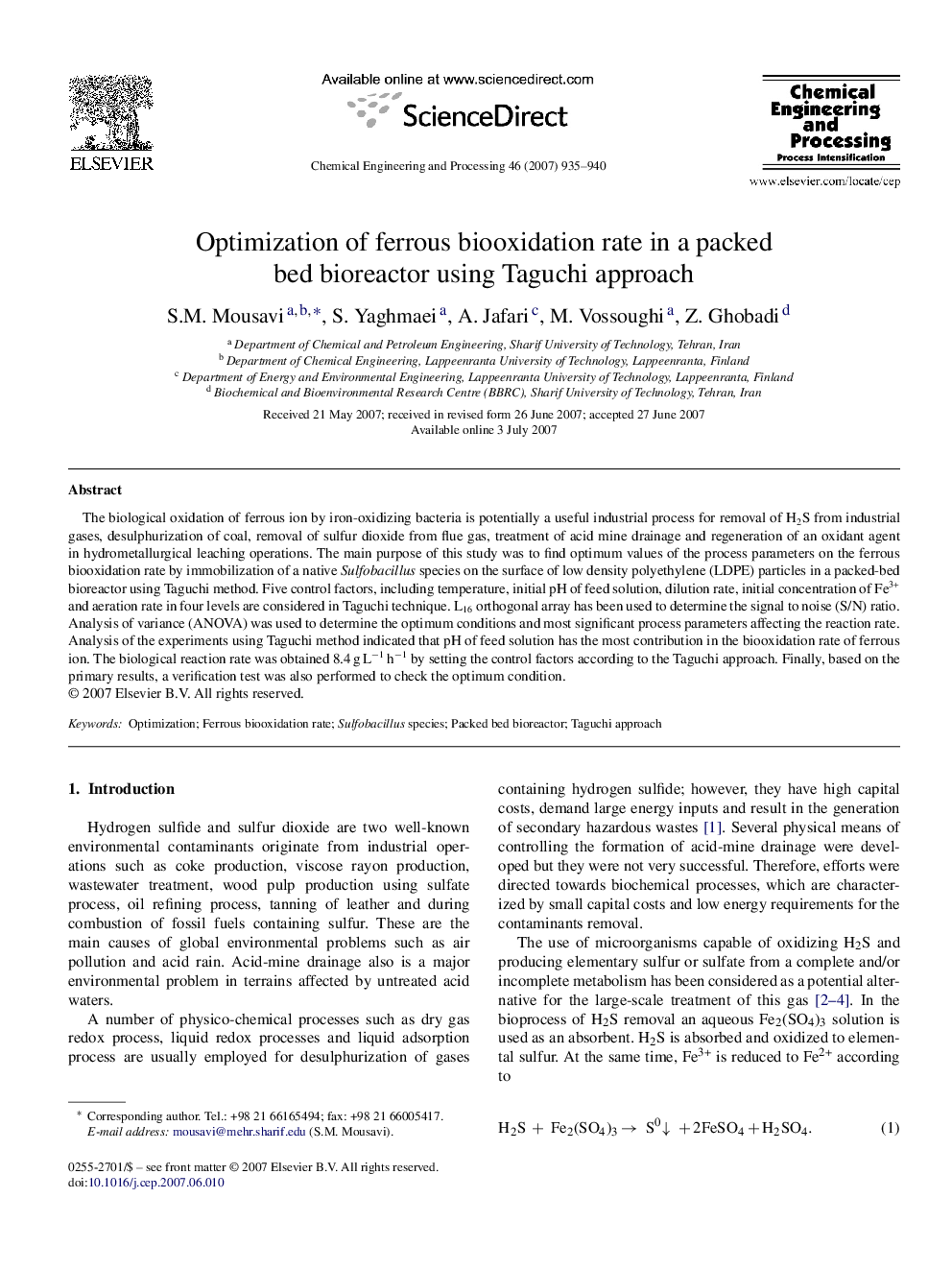| کد مقاله | کد نشریه | سال انتشار | مقاله انگلیسی | نسخه تمام متن |
|---|---|---|---|---|
| 688504 | 889464 | 2007 | 6 صفحه PDF | دانلود رایگان |

The biological oxidation of ferrous ion by iron-oxidizing bacteria is potentially a useful industrial process for removal of H2S from industrial gases, desulphurization of coal, removal of sulfur dioxide from flue gas, treatment of acid mine drainage and regeneration of an oxidant agent in hydrometallurgical leaching operations. The main purpose of this study was to find optimum values of the process parameters on the ferrous biooxidation rate by immobilization of a native Sulfobacillus species on the surface of low density polyethylene (LDPE) particles in a packed-bed bioreactor using Taguchi method. Five control factors, including temperature, initial pH of feed solution, dilution rate, initial concentration of Fe3+ and aeration rate in four levels are considered in Taguchi technique. L16 orthogonal array has been used to determine the signal to noise (S/N) ratio. Analysis of variance (ANOVA) was used to determine the optimum conditions and most significant process parameters affecting the reaction rate. Analysis of the experiments using Taguchi method indicated that pH of feed solution has the most contribution in the biooxidation rate of ferrous ion. The biological reaction rate was obtained 8.4 g L−1 h−1 by setting the control factors according to the Taguchi approach. Finally, based on the primary results, a verification test was also performed to check the optimum condition.
Journal: Chemical Engineering and Processing: Process Intensification - Volume 46, Issue 10, October 2007, Pages 935–940